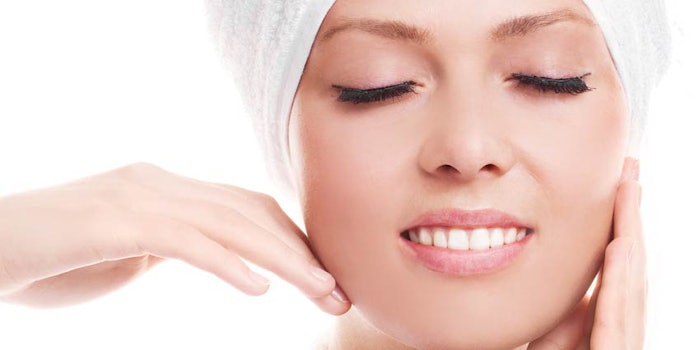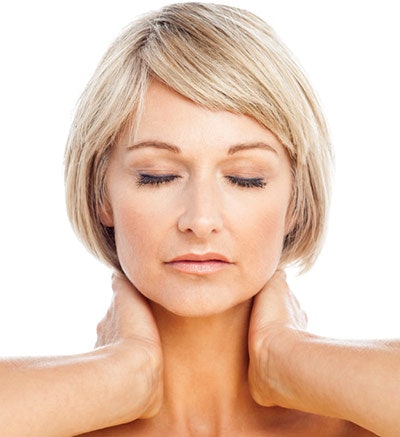
When you hear the word massage, what comes to mind? What happens to your body and your breath? As you say to yourself, “massage, massage, massage,” what images arise? For many of us, the word itself is enough to inspire a moment of tranquility and ease. And if we take it a step further, visualizing our own body being kneaded and rubbed in a serene environment, what happens then? Do your shoulders drop? Do you release an audible sigh? Has your to-do list vanished for the moment and are you now in connection to something deeper within?
Massage has the power to transform every single person in the world, yet many of us are conditioned to think that bodywork always has a price tag. The excuses are never-ending: I can’t afford monthly bodywork. I don’t have the time. I haven’t found the right practitioner. I don’t like being touched. This last one is my favorite—and it’s often said by the person who needs bodywork the most.
It does make you wonder whether massage is really necessary. Is it just a luxury to enjoy on vacation or experience when you’ve been gifted a treatment for a special occasion? Maybe.
But when it comes to therapeutic ways of working with pain, discomfort, spiritual unrest and emotional distress, massage therapy often becomes the most basic way of returning to a sense of peace.
Why? Because touch is our first language. Before sound or words or image, touch becomes the first dialogue of life. It’s how we understand safety, love, equanimity, frustration and hunger.
One of my teachers, Bonnie Bainbridge-Cohen, founder of Body-Mind Centering, teaches that touch begins in utero through the mother’s womb, through her organs, and through the amniotic fluid. This touch continues into birth and into life. Returning to touch in any facet of life, but particularly through the precision of massage therapy, is a return to our origin. Yet many of us think of massage as a service instead of a practice. We see it as a thing we do when in pain, as a way to work with injury, at times of stress or as a way to pamper.
The dialogue of touch through massage is a way to fully connect to yourself in the same way that you connect with the beloved or the divine, with children or nature, with what you love most.
While receiving any kind of massage can be healing and restorative, frequency plays a big part in its efficacy. If you could choose between a two-hour luxury spa treatment once a year and a monthly session for a year, which do you think would have a more lasting impact on your body?
Exactly. Regular bodywork gives you way more bang for your buck. It allows you to review your alignment regularly (is your right side always tighter than the left?) and gives you a good sense of how you favor (or ignore) parts of your body. Plus, regular massage gives you a dedicated space to unwind, receive and breathe.
Bodywork with a trained professional can almost always be helpful but I believe it serves best when it’s routine. And what’s more routine than daily massage?

Self-Massage
Perhaps you’re thinking, “Who can afford daily massage?” Well, you. Daily massage can be a reality when you become both giver and receiver with the art of self-massage—a daily ritual of kneading and tending to the body with touch, oil, herbs and intention.
Performing self-massage can create unlimited benefits, is accessible for everyone, and offers direct intimacy with your body. But perhaps one of the best reasons to begin daily self-massage is that the simple act of touch can be a path in healing.
The idea of healing can mean different things for different people. Many of us consider healing as an eraser for the pain. If my knee no longer hurts, that nagging ache gone, then I’ve been healed. That’s always possible.
But more often than not, healing isn’t necessarily about eliminating discomfort or pain, healing is about being in relationship. It’s a process of wholeness, inclusion, consciousness and love. To heal is to enter into conversation with the body.
Touch is our first language. Touch carries the present moment. No matter what you’re thinking or doing, when someone pats your shoulder, brushes your arm or reaches out to hold your hand, you arrive in the present. You turn your head. You stop typing.
The language of touch moves us. The deeper we develop our ability to sense physical touch, the more we are able to perceive non-physical touch. A look becomes an embrace. A grounded presence is an invitation to relax. Even our environment can massage us into well-being, much like physical massage.
The classic Vedic texts say the secret to longevity and health is daily massage. In between your regular massage sessions, explore the enjoyment and practice of self-massage as soon as you get out of the shower or bath.
An oil massage soothes the nervous system, strengthens circulation and removes toxins from the body. The Ayurvedic texts explain that the use of oil in massage brings about a soft, flexible and strong body. It is extremely beneficial for the skin and therefore should be done regularly.
Massage therapy has numerous benefits for health and maintenance of physical, mental and emotional well-being. Create a daily practice of self-massage before bed, just out of the shower or as soon as you wake. Massage your own feet every night. Make a homemade body oil or body conditioner to elevate your ritual in self-massage.
Benefits of Self-Massage
- Improves muscle tone
- Supports restful sleep
- Promotes longevity of body systems
- Induces physical and mental well-being
- Eliminates fatigue
- Relieves tension
- Activates digestion
- Increases circulation
- Calms the nerves
- Lubricates the joints

How to Perform Self-Massage
Before massaging each body part, focus your mind. Place a small amount of oil or your body conditioner in your hands and rub your palms together.
1. Neck. Starting where your neck and shoulder meet, sweep up toward the head with a slow open palm. Repeat three times.
2. Shoulders. Using your opposite hand, reach across to massage from where your shoulder and arm meet up toward your neck. Repeat three times. Switch sides.
3. Arms. Move up the forearm, elbow and bicep in a slow, upward stroke. Repeat three times. Switch sides.
4. Chest. Massage the pattern of a figure eight across your chest, including your pectorals and breastbone. Repeat three times.
5. Abdomen. Start at the top of your belly and work clockwise in a full circle.
6. Lower back. Cross over to reach your back and without straining, massage your lower back and oblique muscles in a circular motion. Repeat three times. Switch sides.
7. Buttocks. Reach behind to massage your buttocks in a circular motion. Repeat three times.
8. Thighs. Starting at your knees, work upward, cupping both sides of one thigh. Repeat three times. Switch sides.
9. Knees. Massage your entire knee joint with both hands in a circular motion, including both the front and back. Repeat three times. Switch sides.
10. Calves. Starting at your ankles, work upward with cupped hands to massage one calf at a time. Repeat three times. Switch sides.
11. Feet. Take a comfortable seat. To massage the bottoms of your feet, make a fist and use your knuckles to stroke from the heel to toe. Place your hand on top of your foot and sweep upward around the ankle. Cup the heel and circle around. Repeat three times. Switch sides.
Self-Massage Tips
Joint love. The secret to a more inspired, complete self-massage is to include the joints of the muscle you’re massaging.
Be generous. Conditioning is a deeper process than simply moisturizing the skin. This weekly regimen is about hydrating and nourishing the deep tissues of the body. Apply more product than usual. Use your full palm. Spend extra time massaging your head, shoulders and feet.
Hydrate. Massage encourages healthy functioning of your body, while conditioning revives expired skin. Drink plenty of room temperature water to flush out toxicity.












